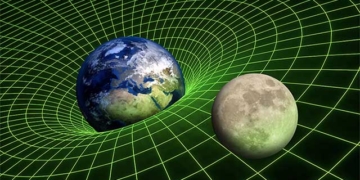Archaeologists have partially decoded an “undeciphered” writing system from the Kushan Empire using techniques similar to those that helped decipher the Rosetta Stone.
The Kushan Empire was an ancient state that stretched from present-day Uzbekistan to what is now northern India, playing a crucial role in spreading Buddhism to East Asia between the 1st and 3rd centuries.
Starting in the 1950s, archaeologists began identifying and studying artifacts bearing “undeciphered Kushan script”, but they were unable to grasp the meanings of these mysterious characters. However, researchers from Germany and Tajikistan announced in July 2023 that they had finally decoded part of this ancient writing system.
The researchers accomplished this by comparing a bilingual text found by French archaeologists in Afghanistan during the 1960s with a bilingual text identified by Tajik archaeologists in Tajikistan in 2022.
The so-called bilingual or trilingual texts are parallel examples that present nearly the same meaning in two to three different languages. Similar to the Rosetta Stone, these multilingual texts allow researchers to identify characters and phrases in the ancient Kushan writing system.

Kushan inscription discovered on a stone surface in Tajikistan. (Photo: History).
Archaeologists first identified Kushan script in the 1950s when they discovered characters written in ink on a staircase in Surkh Kotal, Afghanistan. In the 1960s, French archaeologists found this type of writing on a stone slab in Dašt-i Nāwur, also in Afghanistan. The inscription on the stone contained Kushan script alongside two other scripts representing Bactrian and Gāndhārī languages.
However, the trilingual text did not immediately lead to a breakthrough in understanding Kushan writing. Svenja Bonmann, a linguist at the University of Cologne in Germany and the lead author of a recent study, stated that this was partly due to the French archaeologists taking low-quality photographs of the bilingual text and using an inaccurate drawing of it to discuss their findings. The article on undeciphered Kushan writing was published in the journal Transactions of the Philological Society in July 2023.
Without clear and accurate images of the bilingual text, researchers were unable to translate the unknown Kushan script. In the following decades, archaeologists discovered more examples of this script, including a silver bowl inscribed with characters in Kazakhstan, but its meaning remained elusive. Then, in 2022, Tajik archaeologists identified a bilingual text in the Almosi Gorge in Tajikistan that contained previously unknown Kushan writing alongside Bactrian language.
Jakob Halfmann, a linguist at the University of Cologne and a co-author of the recent paper, stated: “The archaeologists were following information provided by a local man. He had seen the inscriptions on the mountainside near where he lived, and he had been trying to tell the archaeologists about this for a while, but they only believed him and listened to him last year. Then they started an expedition and actually found that there were indeed inscriptions there.”

Archaeologists first identified Kushan script in the 1950s. (Photo: History).
After locating the bilingual inscriptions, Tajik archaeologist Bobomullo Bobomulloev collaborated with Bonmann, Halfmann, and Natalie Korobzow, another linguist at the University of Cologne, to decode the text (Bobomulloev and Korobzow are also co-authors of the recent paper).
One of their significant discoveries is the name of the ruler, King Vema Takhtu, which appears in the Bactrian portions of both the bilingual and trilingual texts, allowing them to identify his name in both parts of the Kushan inscription.
This method is similar to the process that French philologist Jean-François Champollion used when translating the Rosetta Stone, which famously contains a text written in Egyptian hieroglyphs, Demotic script, and Greek. Champollion began by identifying royal names like Cleopatra in the Greek text and then found them in sections of the ancient Egyptian stone.

The Kushan Empire, also known as the Kushan Empire, was an ancient superpower in Central Asia. At its height (105-250), this empire stretched from Tajikistan to the Caspian Sea and from Afghanistan to the Ganges River basin. Due to its location at the vital crossroads of Central Asia, it had diplomatic relations with the Roman Empire, the Sassanid Persian Empire, and the Han Dynasty of China, and for several centuries, it was a center of exchange between the East and the West. (Photo: History).
Most archaeological examples of the unknown Kushan script date from the 2nd century BCE to the 3rd century CE and have been found in countries that are now Kazakhstan, Uzbekistan, Tajikistan, and Afghanistan. The script corresponds to an unidentified Iranian language that may have been one of the official languages of the Kushan Empire, alongside languages such as Bactrian, Gāndhārī, and Sanskrit.
One reason why Bonmann and her colleagues’ research is significant is that it provides additional evidence for the existence of Vema Takhtu, who ruled the Kushan Empire in the 1st century and expanded its dominion into northwestern India. Previously, some scholars had debated whether this king truly existed. The identification of his name in two different examples of Kushan writing has added historical evidence that he was an important ruler of the Kushan Empire.
In addition to identifying the name of Vema Takhtu, the authors of the recent paper also identified phrases such as “king of kings” and “great savior” – both of which describe Vema Takhtu. The authors estimate that they have decoded about half of the Kushan characters and hope to decipher even more in the future. Further research could provide more information about the empire and the people who lived there around two millennia ago.




















































